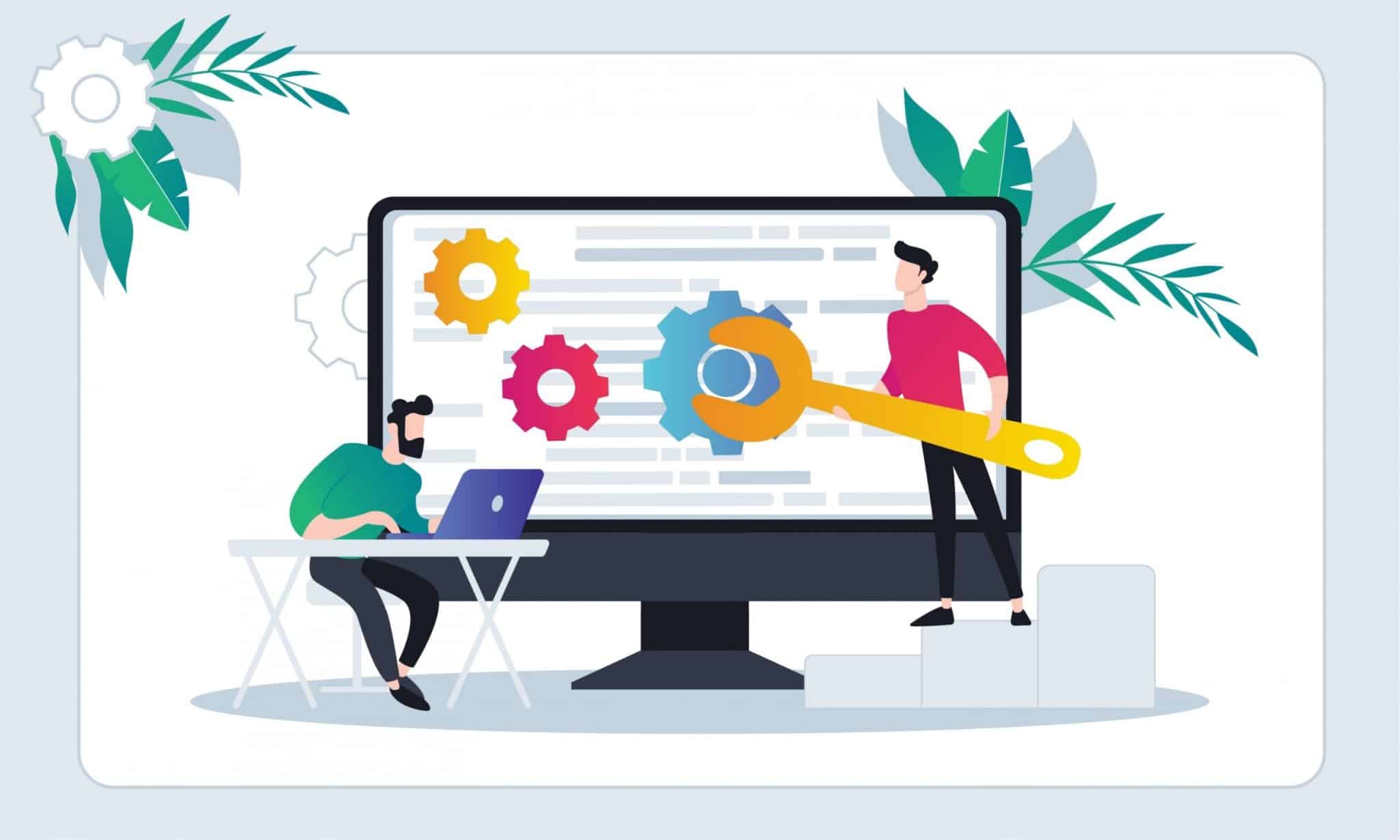Today, integrating digital technologies into business is no longer an option but a requirement to stay relevant in the market. Such digital transformation has become a common thing within our fast-paced environment. And the task is to keep up with it. Innovations, upgrades, and improvements of products and services are the number one goal of every company. But where exactly should they begin?
According to the 280 GROUP report, approximately 50% of companies refuse to follow a consistent product management process. Perhaps, that's why almost a quarter of them fail to build a product that meets their customers' needs. If becoming among those numbers doesn't look appealing, this article is for you. We will discuss what is digital product development, the main steps of digital product development life cycle, key elements related to every step, and some of the obvious benefits you get thanks to them.
- What is a Digital Product Development Cycle?
- What are the Stages of Digital Product Development and Why Should You Consider Each of Them?
- Stage #1: Research
- Stage #2: Strategy
- Stage #3: Validation
- Stage #4: Design
- Stage #5: Development
- Stage #6: Launch
- What are the Benefits of the Digital Product Development Process?
- Final Thoughts
- Consider Inoxoft’s Team of Experts to Create Your Digital Product
What is a Digital Product Development Cycle?
Digital product development is the process of inventing and programming interactive digital assets, explicitly focusing on delivering a value proposition to the end user. Some digital products examples are web, mobile, or desktop applications and platforms, hardware, software, etc. You start building digital products right when you get a feeling it’s really worth trying. And that leads you to begin brainstorming and discussing your idea in detail.
To not mess up the whole process and make it actually efficient, you need a structured organization. Hence, we end up with the digital product development lifecycle – a specific framework guiding you out of the woods. By implementing this product development framework, you can figure out and plan your working process in the most effective way possible! Going step by step through development phases truly helps you to pay attention to everything and appropriately work through your ideas before their implementation.
In reality, digital product development process doesn’t really vary from physical product development — it’s the lifecycle that differs.
What are the Stages of Digital Product Development and Why Should You Consider Each of Them?
The digital product development life cycle consists of numerous phases that should accompany the developer from product inception to its launch. Let’s find out what stages of digital product development we need to consider!
Stage #1: Research
You definitely need to have a precise vision of your future enterprise to make it prosperous. Conduct an in-depth analysis of the market and its demands. Also, don’t forget to check out your potential competitors, paint a picture of your target audience and get to know overall current trends. Then, you can actually answer the following questions: “Are my digital product ideas just copies of other already created apps?; Is the proposition truly unique?”; “What use does it bring to the customers?”.
Anyhow, we may deem this phase as one of the most vital stages in the digital product development cycle. It provides us with all the necessary data and information about our product’s value proposition.
Stage #2: Strategy
Moving on, you’ll need to find a dream team of developers for your digital product to start the process. This stage involves a lot of conversations, discussions, and brainstorming! Thus, you can finally define your goals, requirements, and resources, including a budget, deadlines, team capacity and other nuances. Besides that, think about the not-so-pleasing side of this adventure: possible failures and risks. This way, you and your team will be aware of both advantages and disadvantages and have an opportunity to make efficient decisions. Thanks to the discovery phase, we can notably enhance the digital product development strategy.
The decisive battle: product vs. project thinking!
Stage #3: Validation
Imagine creating a product and, right after its launch, discovering the effort wasn’t worth it. We must agree — that doesn’t sound very pleasant! Hence, digital product development is meaningless without validating the initial idea. Having a desire to be 100% sure about the validity of the project you’re going to put time and effort into is an obvious thing. Conduct interviews and focus groups with your target audience, analyze the achieved data and extract from them exclusive insights that help you to make a product perfectly suitable for the market and your users’ expectations.
Stage #4: Design
And the journey through digital product development stages goes on. Finally, we’ve reached the fun part — designing the application’s overall look! You most certainly would like to start with developing a prototype of your product. Why? Getting the outlook from the end-users perspective helps you understand which direction to go and what to improve. Basically, that’s the phase where the UX/UI comes in. The prototype consists of a simple design and partially limited functionality so that it would resemble the final product. Its main goal is to get as much feedback from early adopters as possible.
Based on the info we get from testing the prototype, we may move to building the minimum viable product. MVP is crucial before developing the full product since it practically saves the product from a complete failure.
An honorable mention to the pilot testing, where your team makes sure everything is ready for alpha and beta releases. The alpha phase is the first working prototype that tests digital product’s design and overall functionality within the internal team. For its part, beta testing allows wider circles to see what an application looks like and then provide their feedback.
Stage #5: Development
Advice that basically becomes an agreed rule: stay away from the waterfall method and switch to the agile approach. Agile digital product development is well-known for its efficiency and flexibility in responding to the tiniest adjustments. The development process is divided into sprints — small phases that end with the delivery of fully functional software.
And where do we think we are going without quality assurance testing? Definitely not far! It helps refine digital products’ performance and spot possible defects. QA is an integral part of the development process since you can ensure that the app’s working just as intended on various platforms. Also, it helps you test the product’s scalability, functionality, and readiness for launching.
Stage #6: Launch
This stage is the moment of truth — you’ll finally get to know whether everything was truly worth it. But first, marketing time! At the pre-launch step, you need to implement your marketing strategy for promoting your digital product. Think of email marketing, landing pages, writing guest postings, running social media and other promotional campaigns. All of those points are pivotal in attracting customers that might be interested in your product.
It’s definitely better to start slow rather than go all-in with the public release. There’s always a chance of uncovering undesirable glitches and bugs in the product’s first version. For that reason, you should consider a soft launch of the digital product, like a private beta. This way, you minimize the possible loss of users, get the public’s opinion and improve your digital product.
That’s not time to relax yet! Post-launch review and maintenance is also essential part of digital product development. In order to stay relevant, the application needs to upgrade constantly and have new features and other additions. And you can do it based on users’ feedback! Moreover, focusing on specific product management metrics to analyze is an excellent way to gauge products’ performance and overall success.
What are the Benefits of the Digital Product Development Process?
Yes, the whole process of building digital products is definitely not a piece of cake. However, there’re plenty of advantages that you receive going through all steps of digital product development. For instance, digital product development is expected to increase efficiency by 19% and reduce production costs by 13% in less than three years! Anyhow, other benefits include:
- Enhancing the user experience and meeting their expectations by applying the latest technologies;
- Spotting and fixing bugs and other product issues at early stages — conservation of resources;
- Improving the communication between team members and efficiency of workflow;
- Leading to digital products’ success and sustainability and reducing the risk of failure.
But honestly, how do all those phases of digital product development influence your business future? There’s little to no chance you can create a perfect product if you skip any stage of its development. The digital product development phases have their own purpose and specific effects on the final application. Thanks to each, a product can be created and evolved in the best way possible. In simple terms: you are doomed to success!
Final Thoughts
At this point, digital product development plays a crucial role in its future. Hence, it’s better to avoid unnecessary movements and crazy ideas for digital products that might lead to risky outcomes. A decent plan and structure will help you enter the market without numerous bruises and scratches. Nevertheless, be ready for the possible challenges and sharp turns on your way to it. Follow the steps and processes to build a digital product successfully!
Consider Inoxoft’s Team of Experts to Create Your Digital Product
Building a digital product all alone might be a really tough challenge. This process requires an awareness of the latest technology trends, excellent analytical skills, and certainly an experience in software development solutions. Meet Inoxoft — your loyal digital product development firm ready to accompany you through the development process!
Our company provides product discovery phase services to estimate whether your solutions and requirements for the product match business needs ideally. The team of professionals consists of business analysts, senior engineers, lead software developers, UX designers, QA engineers, and technical architects. They are hopelessly devoted to your business and its success, so that they will guarantee an impeccable development process.
Get in touch with us to receive a detailed consultation and start working on your dream project as soon as possible!
Frequently Asked Questions
What is the importance of the digital product development cycle?
Thanks to the digital product development cycle, you can figure out and plan your working process in the most effective way possible! Going step by step through development phases truly helps you to pay attention to everything and appropriately work through your ideas before their implementation.
What are the main digital product development phases?
The digital product development life cycle consists of 6 phases that should accompany the developer from product inception to its launch:
- Research
- Strategy
- Validation
- Design
- Development
- Launch
What happens after the development of digital products?
That's not time to relax yet! Post-launch review and maintenance is also an essential part of digital product development. In order to stay relevant, the application needs to upgrade constantly and have new features and other additions. And you can do it based on users' feedback! Moreover, focusing on specific product management metrics to analyze is an excellent way to gauge products' performance and overall success.









